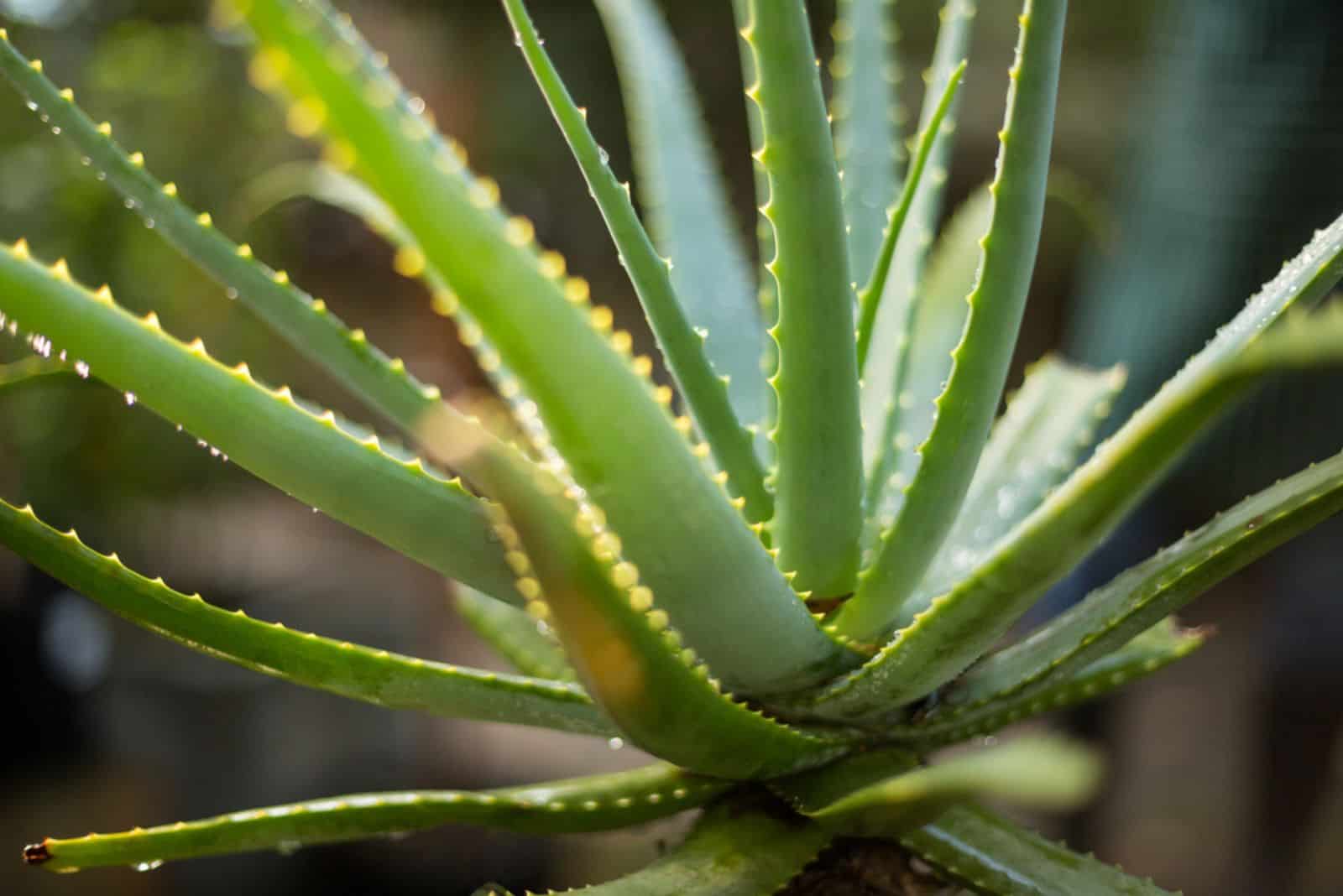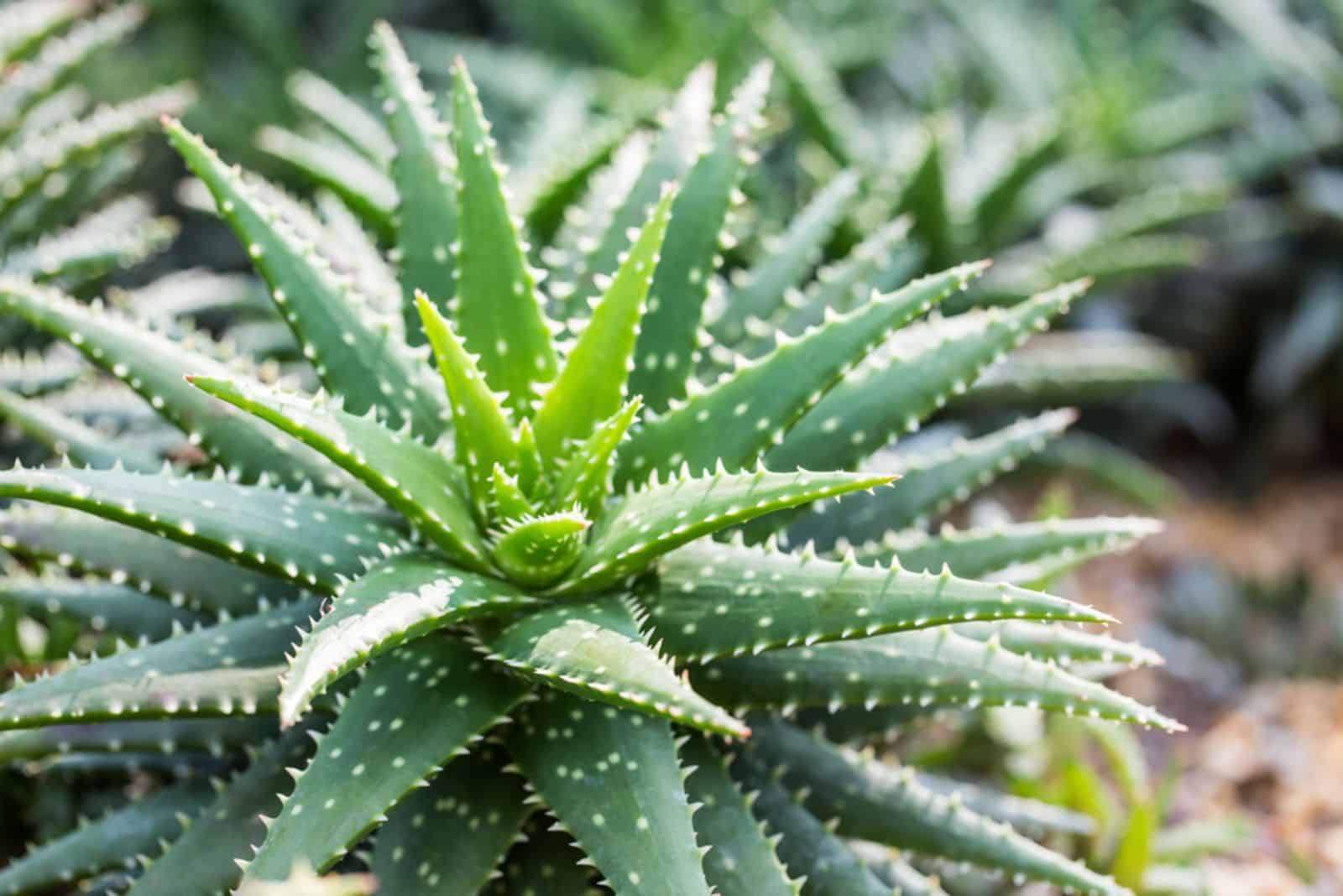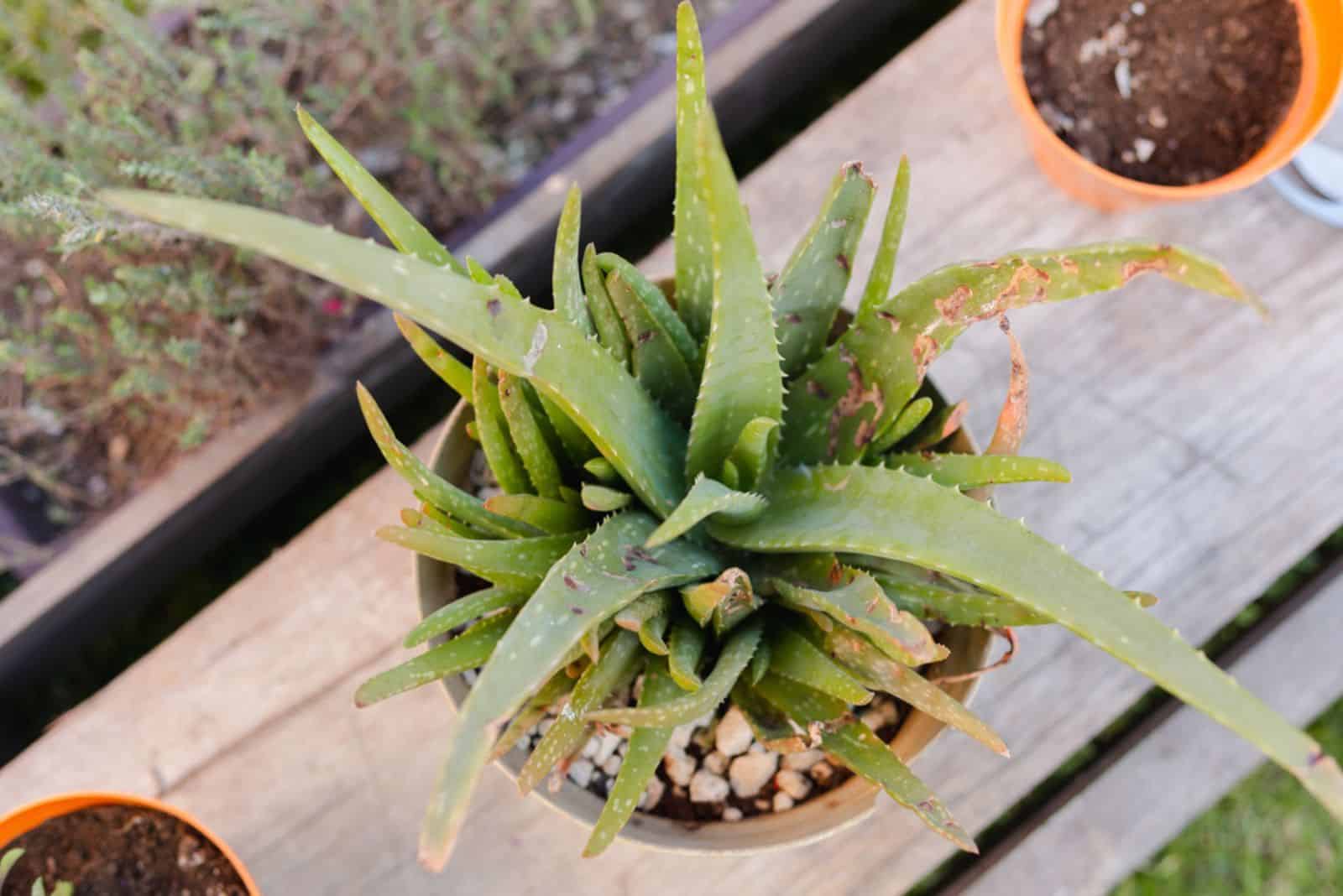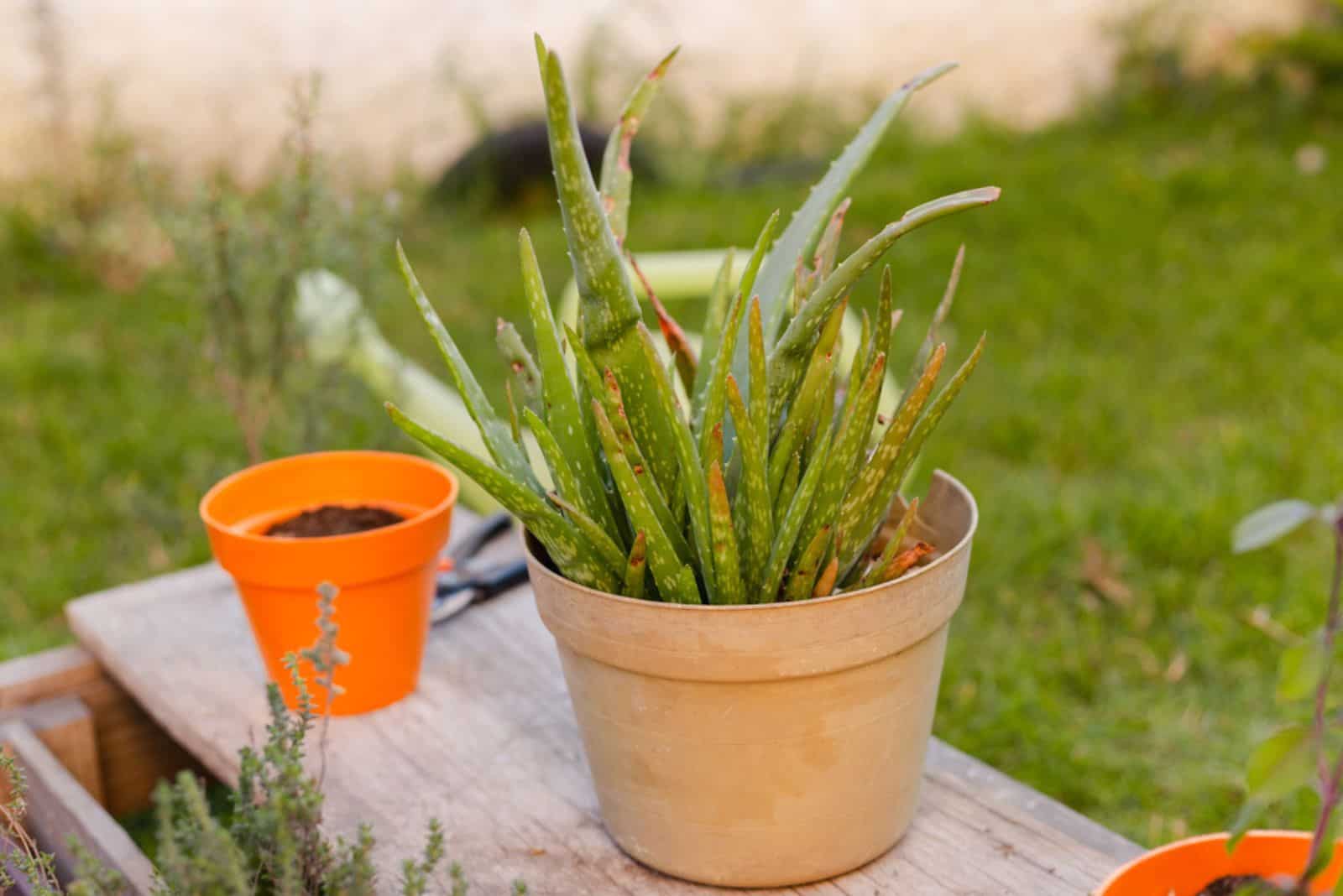Aloe vera plants are native to dry and warm regions of the world, which means they can tolerate high temperatures. However, many growers believe that these aren’t hardy plants that won’t withstand lower temperatures at all.
It’s essential to know about aloe vera temperature tolerance because if the range is wrong, it can severely harm your plant.
I’ll discuss the highest and lowest temperatures this succulent plant can withstand, and how to know if your aloe is suffering from heat or cold stress, in this article.
Let’s get started!
What Is The Lowest Temperature Aloe Vera Can Withstand?
Don’t think of aloe vera as an overly sensitive plant when it comes to temperature. The lowest this plant can withstand is 40 degrees Fahrenheit.
If you keep your aloe in these temperature conditions for a long period of time, your plant’s will be in mortal danger. Cold breezes can damage the leaf tissue and leave it discolored and deformed. (1)
Some growers introduce their plants to lower temperatures to harden them, but this isn’t a good idea! Your Aloe will quickly go through cold shock and its growth will be severely inhibited.
Aloe vera plants are more robust than the majority of their cousins, but everything has its limits. This isn’t a frost-tolerant plant and you shouldn’t experiment with it.
How Warm Is Too Warm For Aloe Vera?
The fact is that plants native to deserts are used to warmer temperatures, but aloe plants have their limits when it comes to high temperatures too.
If you grow aloe in your apartment and temperatures don’t exceed 85 degrees Fahrenheit, you’ll have a thriving and healthy plant. This means that aloe species respond well to average indoor temperatures.
If the temperature exceeds 85 degrees Fahrenheit and you don’t lower it or relocate your aloe, it will go through heat stress.
There’s one essential thing to discuss related to temperature fluctuations. Aloe vera can adapt to higher-than-recommended temperatures but it will never adapt to sudden temperature changes. Never put your aloe vera near radiators, fireplaces, air conditioners, or drafty windows because sudden temperature changes can severely inhibit plant growth and even result in death.
Symptoms Of Cold Stress
Now that you know the lowest temperature aloe species can withstand, it’s time to find out how to recognize if your plant is suffering from cold shock.
Leaf Discoloration
If you grow plants, I’m sure you’ve noticed that leaf discoloration is the first change they display if under any kind of stress.
Your aloe vera will most likely develop brown or black leaves if grown in low temperatures. It’s important to know how this happens. Low temperatures affect chloroplast, which participates in photosynthesis. As a result, plants can lose their original leaf color and display poor growth. (2)
Mushy Leaves
Low and freezing temperatures will cause the leaves of aloe vera plants to become mushy and very sensitive.
If your aloe goes through cold shock, it will most likely first display deformed leaf tips. The main problem is that your aloe can die if you don’t fix it. The roots of your succulent will be next in line to show signs of cold stress,and when this happens your plant will likely die soon.
It needs to be mentioned that aloe veras, and all other plants in general, take time to show the symptoms of cold stress. This is because the plant is fighting for its life and will use all its energy to survive. Therefore, you need to act as soon as your aloe displays any signs of stress because it’s getting weaker and weaker day by day at this point.
Wilting/Curling
Cold stress is one of the reasons why the leaves of aloe plants bend. This is a serious condition and it’s almost impossible to bring them back to life from this.
Succulent species such as aloe vera can store water in their fleshy leaves, and when the water freezes, wilting, curling, and shriveling occur.
It can be very hard for plant parents to notice if cold is causing changes in the leaf structure because many other factors can trigger the same response.
For instance, wilting can occur if your aloe grows in temperatures that are too high or it’s receiving too much direct sunlight. If these changes occur in your aloe vera, check the temperature around the plant.
Symptoms Of Heat Stress In Aloe Plant
Cold injury is life-threatening for aloe vera plants, but we shouldn’t forget that heat can have a similar effect.
Let’s see what heat stress looks like in aloe vera plants.
Wilting
A lot of environmental factors can induce wilting in aloe vera plants, but the most common one is high temperatures, especially if combined with full sun.
If the temperatures around your aloe vera are higher than recommended, the water from the growing substrate will evaporate too fast and leave your plant dehydrated. If your aloe lacks water, it will develop crispy and dry leaf tips before wilting.
Leaf Burn
Harsh sun rays and high temperatures can cause sunburns on the foliage. Although aloe vera likes full sun, too much exposure can damage the leaves.
These succulents respond well to bright indirect light, and if you relocate and expose them to more light, sunburns are inevitable.
Dry Soil
There are many causes of dry soil in aloe vera plants, such as high humidity, lack of water, and high temperatures.
From my experience, the most common one is loss of water caused by temperatures above 85 degrees Fahrenheit.
Even if you irrigate your aloe more often, things won’t get better until you lower the temperatures. The tricky part is that these plants don’t need a lot of water in general. It’s hard to tell if temperatures are too high until some discoloration or deformation occurs.
Can An Aloe Vera Recover From Temperature Stress?
The possibility of an aloe recovering from temperature stress depends mainly on the severity of the damage.
If all the leaves are discolored and deformed, you’ll need to dispose of your aloe vera. On the other hand, it’s worth trying to save your aloe if there is still some green foliage left.
If your aloe vera has spent some time in low temperatures, you need to relocate it to a warmer spot with enough bright indirect light. It would be best if you did this gradually because if the temperature where you kept your aloe was 30 degrees Fahrenheit, for example, moving it to temperatures of around 70 degrees would shock it even further.
Don’t water your aloe vera, and remove damaged sections with sharp, clean scissors. Don’t forget to check the root system as well; if some roots are affected, you should prune them off. When you see new green parts on your aloe, be happy because it means the treatment was successful!
If you have a sunburnt aloe, move it to a spot with bright indirect light, give it a good soak, and repot it.
Which USDA Zones Are Suitable For Growing Aloe Vera Plants Outdoors?
Aloe vera can be successfully grown outdoors, but only if you live in USDA hardiness 10 and 12. What I especially like about growing aloes outdoors is that they’re fuller and healthier due to their access to natural sunlight.
But I recommend taking your aloe indoors if the temperatures drop below 50 degrees Fahrenheit. You’ll most likely need to do this if you live in Southern Florida or Southern California. Check your hardiness zone before taking any of your plants outdoors.
Overwintering
Many growers struggle with overwintering, but you’ll need to do it properly to save your plant from freezing.
One of the easiest ways to overwinter an aloe is by taking it indoors. Other options include conservatories, covered porches, or spots next to a sheltered wall. A very popular method is covering aloe veras and other succulent plants with horticultural fleece.
Here’s a video on how to do it:
Never allow the aloe vera pot to touch the ground because frost will kill the roots; you should raise the pot off the ground instead.
Wrapping Up
Aloe vera plants are more robust than many other species with succulent features, but it’s important to know that these plants are native to warm regions of the world and we should mimic such conditions if we’re growing these plants indoors or outdoors.
Remember that aloe vera temperature tolerance is down to 40 or up to 85 degrees Fahrenheit.
If you live in a warmer climate, you can cultivate lovely aloes outdoors and overwinter them using our techniques.
Until next time!
References
1. Pearce, R. S. (2001). Plant Freezing and Damage. Annals of Botany.
2. Liu, X., Zhou, Y., Xiao, J., & Bao, F. (2018). Effects of Chilling on the Structure, Function and Development of Chloroplasts. Frontiers in Plant Science.





